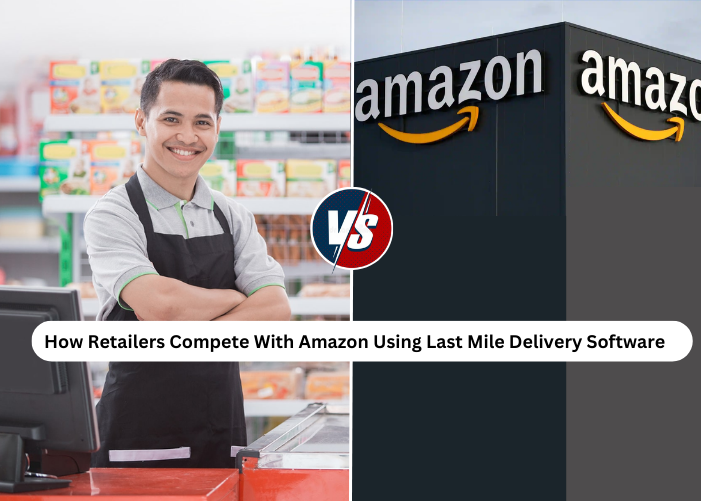1) It is 2023 – will small retailers be able to compete with Amazon’s ever-growing clout?
E-commerce giant Amazon arrived in the early 19990s and has grown rapidly to great power since. Not only has it changed the way people all over the world shop but it continues to push the envelope by constantly innovating and testing new concepts. Modern delivery standards – the now famous 24-hr delivery or Next-day delivery – were introduced by Amazon. If someone told you in 1990 that your product would reach you the evening of the same morning that you ordered it, would you have believed it?
Amazon exerts considerable influence on buyer behavior. It also sets – and, manages – customer expectations. Where you buy, what you buy, how you buy, what your acceptable price-point is…well, Amazon controls a lot of it. Oh, and it ensures that it constantly leverages its marketplace clout!
Amazon’s clout with the online-consumer is clearly evident from its 55% market-share for product-related searches. Expressed differently, Amazon is the world’s leading Ecommerce search engine. Not, Google.
Also, consumer needs are forever dynamic. Recent studies show trends where 50% of buyers aren’t necessarily looking for the “fastest delivery”. In fact, they are happy to wait a few more days if offered cheaper delivery charges or more options in delivery locations, particularly in urban zones.
As we head into the future, you might wonder if the ubiquitous small retailer or the small delivery business can ever compete with the sheer dominance that Amazon has achieved.
Consumer Trends: Slower Delivery With More Pickup Locations?
New customer-research indicates that customers are prioritizing more delivery-options over just delivery-speeds. Yup, you read correctly! Consumers can prefer slower deliveries if you offered more options e.g. more pickup-locations.
Importantly, smaller businesses can certainly learn from Amazon with regard to supply-chain logistics, reducing emissions, cutting costs, and aligning with customer expectations to gain a differential advantage.
2) Meeting customer expectations: small businesses must take cues from Amazon’s ever-changing logistics strategies
Amazon Day allows subscribers to select their day of delivery. Thus, instead of making numerous trips every week to the same location, Amazon now makes just one trip per week. This is to reduce logistics costs, as well as to reduce emissions in last-mile delivery, the most polluting leg of the supply chain!
However, sizeable as Amazon’s logistics network may be, it is still only a fraction of the total logistics network for SMBs (small-medium businesses) across the world. Therefore, if SMBs also adopt such sustainable logistics, it would result in a significant reduction of their own delivery costs as well as carbon emissions. Remember, a company’s sustainable business practices are a key influencer for consumers in deciding which brands/companies they buy from.
Last-Mile Delivery: Importance
- Enables quicker delivery: The faster you deliver customer orders, the happier they are. It really is as simple as that!
- Centralized delivery management: Logistics firms control all activities of the last mile via a central dashboard thus greatly improving its efficiency
- Seamless logistics: The last mile is the most important cog in the logistics chain. As the goods approach the final warehouses and leave for the customer’s doorstep, the last-mile services kick in.
3) Using last-mile software is crucial in the battle against Amazon
Given the above scenario, what can retailers, small or large, do to compete against Amazon’s cutting-edge logistics?
Well, we live in a time when software is affordable to pretty much everyone. Today’s automated, GPS-enabled, data analytics and AI-powered last-mile software aren’t any different!
Last-Mile Delivery: Challenges
- Higher costs: By far, the most expensive part of the logistics chain. Mismanagement would inflate your fulfillment cost and shipping-charges
- Customers demand transparency: Modern day-customers want complete visibility of their products under shipping, down to the very last detail!
- Maintaining efficiency: Modern logistics & distribution is a complex, global operation that runs 24*7. Understandably, this poses numerous challenges
Grappling with manual route planning that not only isn’t efficient enough will not cut it. To compete with Amazon – bolstered at every step with path-breaking innovation- you too must quickly adapt to new tools and technology like last mile delivery software. Whether you use it yourself or outsource your delivery to a 3rd party depends on your business needs. Either way, using delivery-management software is critical for success!
Let’s look at the top 5 benefits:
1. Route-optimization: A leading benefit that ultimately benefits your business in numerous other ways.
By itself, this feature allows firms to optimize delivery routes in real time. Several variables that impact route optimization (delivery locations, roads, package type, fleet, driver availability, number of stops per route) are balanced out to arrive at the optimal solution in a matter of seconds. The routes can also be tweaked in real-time based on contingencies like inclement weather, traffic congestion (etc.). Drivers, warehouse operators, and end-consumers receive live notifications of progress.
2. Improved shipment visibility and transparency: Today’s last-mile delivery solutions provide logistics teams with the great tool of real-time shipment visibility.
Whether fleet vehicles are progressing per schedule, deviating due to contingencies, or spending time idling, logistics teams can now track their movements on their console maps. Pilferage, spoilage, and thefts are also minimized due to constant monitoring.
3. Customer engagement: Today’s customers are ever-demanding. They want to be kept informed about the exact status of their parcels. Such software provides them with end-2-end visibility of their order status.
From the time that the order is placed, shipped, and the order ETA – everything is available in real-time for the customer. This increases customer confidence immensely.
Last-Mile Software: Select An “Intelligent” System
- Last-mile automates entire eco-systems and their numerous services
- This helps you to control all activity via a centralized dashboard with helpful and robust features.
- Perhaps, its most important benefit is how it makes last-mile delivery services more “intelligent and smarter”
4. Delivery flexibility: The modern customer is forever mobile and on the move. This means there may be changes to delivery (e.g. changed delivery window). Live communication with the driver enables last-minute adjustments to order delivery (time, location, etc.), thus providing flexibility.
5. Reduces costs, and improves profitability: As mentioned in Pt.1 above, route optimization has several – very important – cascading benefits.
More deliveries per day per route, reducing fuel consumption, lowering cost-of-operations, improving driver and fleet productivity, and finally, boosting customer retention and loyalty – the list is long and beneficial!
Thus, it is imperative for retailers to optimize their supply chain and logistics by leveraging the benefits of last-mile delivery software.
Conclusion: As is evident, for retailers and delivery companies trying to compete with the might of Amazon, using last mile delivery software is critical to success.




